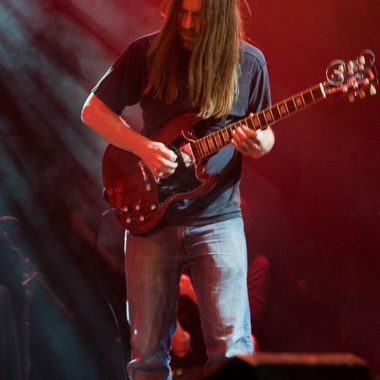From the gruesome to the humane, George Romero’s posthumous novel goes places his movies couldn’t
The coronoavirus pandemic of 2020 would have been a goldmine for George Romero, a milder mirror of the world he explored over the course of nine magnificent and gruesome movies. People with COVID-19 are far from animated corpses, of course, but the unwillingness of so many of the noninfected to work together and protect one another strikes at the core morality of Romero’s Living Dead movies.
And there is a morality at play in Romero’s stories. Beginning with his first movie—the 1968 self-financed feature Night of the Living Dead and up through 2009’s Survival of the Dead—Romero told stories that depicted people at their best and their worst, not as victims but as selfless heroes and selfish wretches. That core of humanity is what so many of his imitators got wrong: the movies were never about the monsters, the movies were about the people trying to survive.
Romero—who joined the ranks of the dead in 2017 at the age of 77—was an old hippie. He cared about people, even people who didn’t care about each other. He believed that people would be OK if they just helped each other out, if they would try to get along, even when confronted by animated corpses trying to eat their flesh. In his movies, however, people rarely rose above self-interest.
At the time of his death, Romero was working on what would have been—and now is—the 10th installment in his tales of the living dead, and the first to come in the form of a novel. Daniel Kraus, who co-wrote the novelization of The Shape of Water with director Guillermo del Toro, was asked by Romero’s wife to complete the half-finished manuscript. At 630 pages, it’s far too significant a piece of work to call an “epilogue” or a “coda.” It is, rather, a worthy installment to a fantastic, multi-arc myth, continuing and extending the humanity of Romero’s best films.
The Living Dead takes us back to the initial days of the scourge. It’s not a reboot but it is a bit of a restart. (The novel is the third “day one” story in the cycle; it’s best to accept and overlook the incongruities in the timeline that come from Romero’s updating of the present day as his tale unfolds anew.) We meet newscasters, morgue workers, military men and women, ministers, junkies—all with their own competencies and incompetencies, doubts and confidence. All of them are sympathetic characters, as are the undead. Never in Romero’s world have we been so close to a person as they turn, as the craving for flesh sets in. They’re not so much dead, it seems, as dormant, and then awake with an unspeakable appetite. They’re not the enemy, there are no enemies, and everyone’s a threat. In The Living Dead, it’s no longer us vs. them because, more so than in any of the nine movies, any one of us at any point could become one of them.
The mysterious crisis brings out the worst in people, not just in desperation but in blind efforts to blame. Racist and anti-immigrant attitudes define theories informed by intentionally dumbed down broadcast news reports in scenes that feel all too familiar. The short chapters fly by. Some pages seem brittle with suspense, others practically dripping with gore. But what propels the narrative isn’t the flesh, it’s the heart.
Unlike movies, novels don’t come with soundtracks. In this case, however, a recent split release by Fossill Aerosol Mining Project and 400 Lonely Things can make for a perfect score for your reading. Nigths and Profecy (released on cassette and download) is deeply enmeshed in the sound and spirit of Romero’s undead. Both projects have considerable histories with zombie-influenced audio works, often incorporating processed samples from Romero’s films. They share an affinity for dark, industrial ambience, bringing to mind the longstanding and astoundingly aptly named Illusion of Safety. Each has an extensive Bandcamp library, and the new album is available for streaming as well. Nigths and Profecy brings out the bleak best in both and is chilling in both senses of the word: it provides a dark background for reading or other nefarious activities, but might bite you if you get too close.










